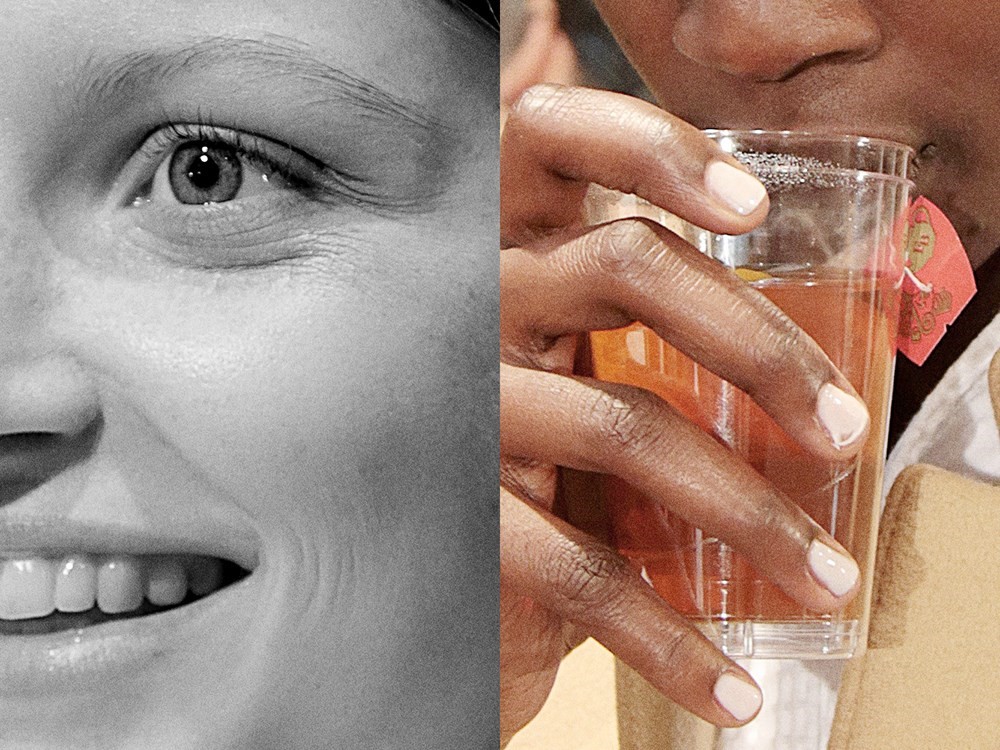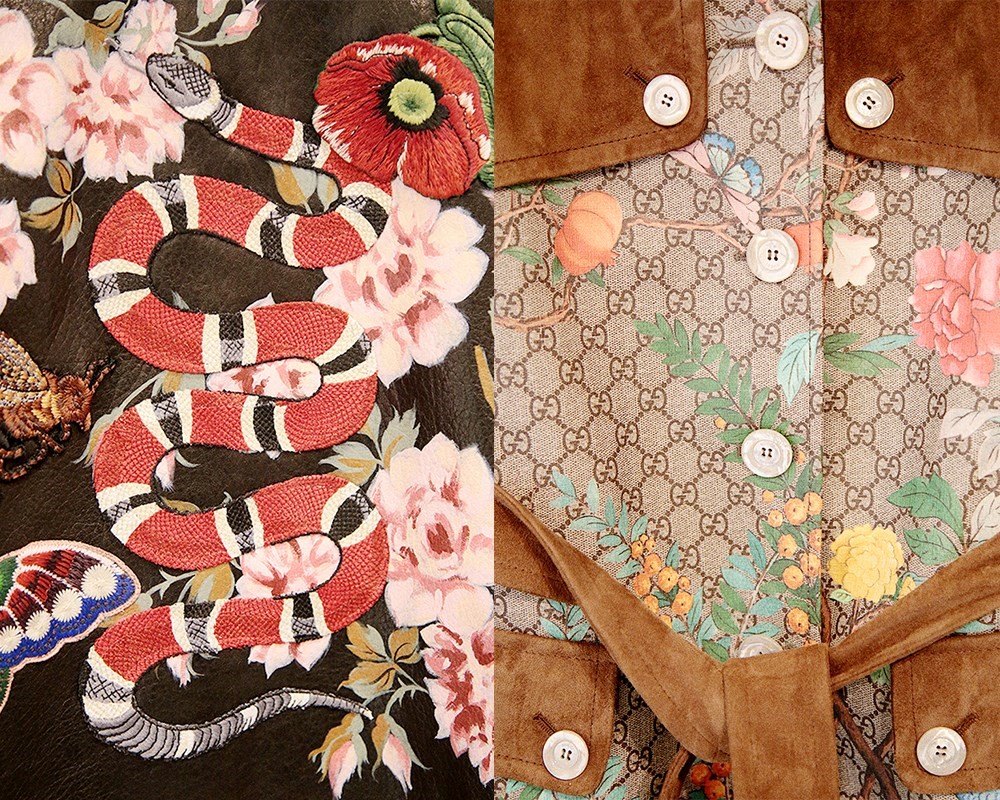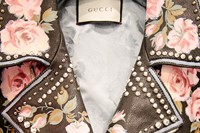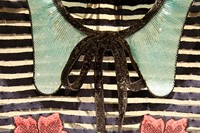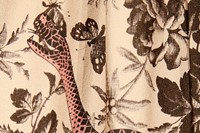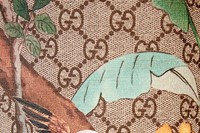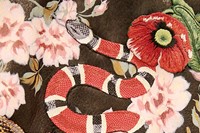In 1654, French novelist and master conversationalist Madeleine de Scudéry created the Carte de Tendre, as part of her novel Clélie. It was a map, based not on actual geography, but on pyscho-emotions, guiding one’s way through passages of patience and faithfulness before you can arrive at the final destination of love. Scudéry was certainly ahead of her time, in terms of seeing the world not as a geopolitical place, but as one where feeling takes over, and so this ground-breaking map became the perfect starting point and metaphor for Alessandro Michele’s latest collection for Gucci, which was presented at the beginning of Milan Fashion Week. The mapped out Gucci-land and each area of its aesthetic sphere – be it double G handbags, horsebit loafers or 70s glamour – have been flooded with sentiment. An aura of warmth has permeated this Italian stalwart house, with an audience willing to don rose-tinted spectacles and see Gucci in a new light. It’s hard not to marvel at the sheer range of world-derived ideas and time-travelling motifs that flourish in what is Michele’s most broad collection yet for Gucci. The immediate appearance of the clothes reads vintage, but the actual make-up of each garment shows a mind that takes voyages to whatever period or place it wants to go. We take a look at the finer components of Michele’s eclecticism – one that is fast seducing the world beyond the Carte de Gucci.
The Eye Has to Travel
Back in June at Gucci’s cruise show held in New York, Michele said, “Luxury means that you show the way you dress with eccentricity. It’s almost like a new kind of jet set – instead of roaming around the world, you’re roaming with your clothes.” For S/S16, Michele was once again roaming with clothes but ones that simultaneously manage to globetrot and span centuries in time. The result is a collection bursting with pick-and-choose pieces that speak to the Gucci woman's individual desires. On the runway, she was a more demarcated character – defined by her geeky eyewear, girlish insouciance and otherworldly bookishness. On the rails, it’s a diverse mix of whatever takes your fancy. Bucol silks mimicking 18th century French wallpaper were crafted into suits. Ornate Chinese embroidery adorned a 70s Soul Train-esque satin tracksuit set. Mid 20th century geometric prints are interrupted by Japanese blooms. Jewellery replicates the royal hands of Tudor portraits as well as shortened finger coverings of empresses of the Qing dynasty. There’s an ambiguity to many of the pieces as Michele draws from so many eras and continents within one collection. Is an embroidered flower and bird derived from India, Mexico or China? Meerkats roaming on a leather skirt could be from a Grecian pot or an African cave painting. In the end, you can’t quite map out the exact locale or period. Moreover, Michele is an adept observer of periods and subcultures reflected and refracted at another time. For example, a studded biker jacket peppered with Gucci flora or similarly spiked up shoes, are more likely to be inspired by a contemporary Japanese rockabilly’s interpretation of English punk. This is a reflection of our world today – recalling and referencing the past in the hope of eking out something new. In Michele’s case, the newness can be found in the feeling that his clothes and spirit have brought to the house. And moreover this isn’t surface for surface’s sake. As the bulging contemporary sector of the fashion landscape continues to churn out minimalist-light product, based on vague notions of what is “modern” and “easy” today, Michele’s collections for Gucci represent one of the few lone voices that fights for clothes that are storied and intensely ornate. It’s certainly a beautiful protest.
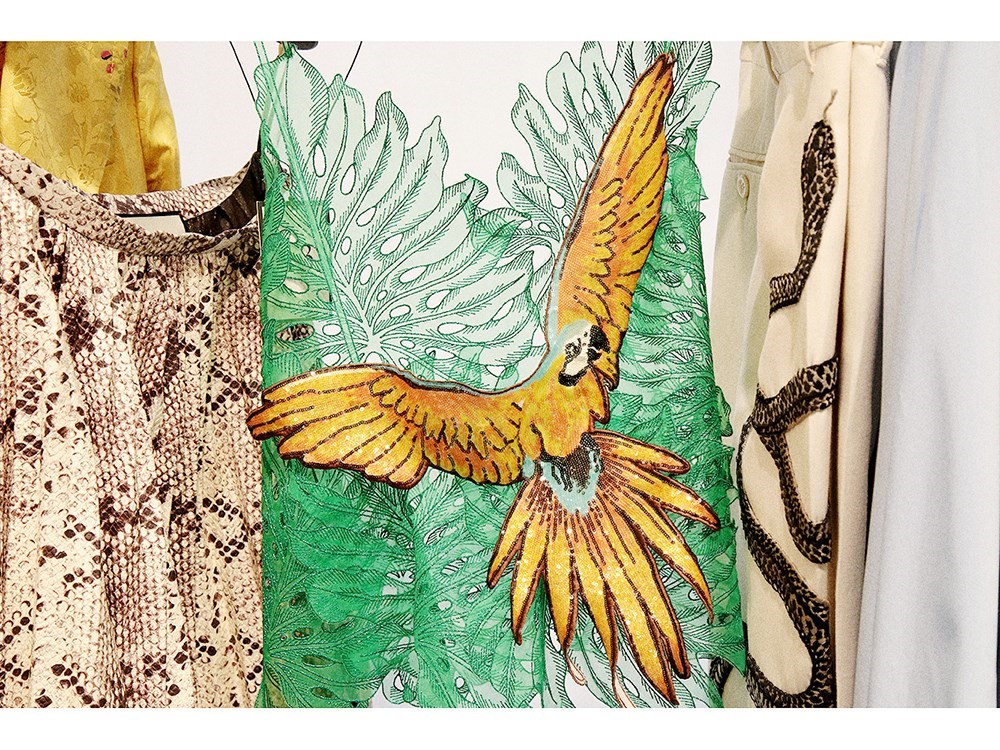
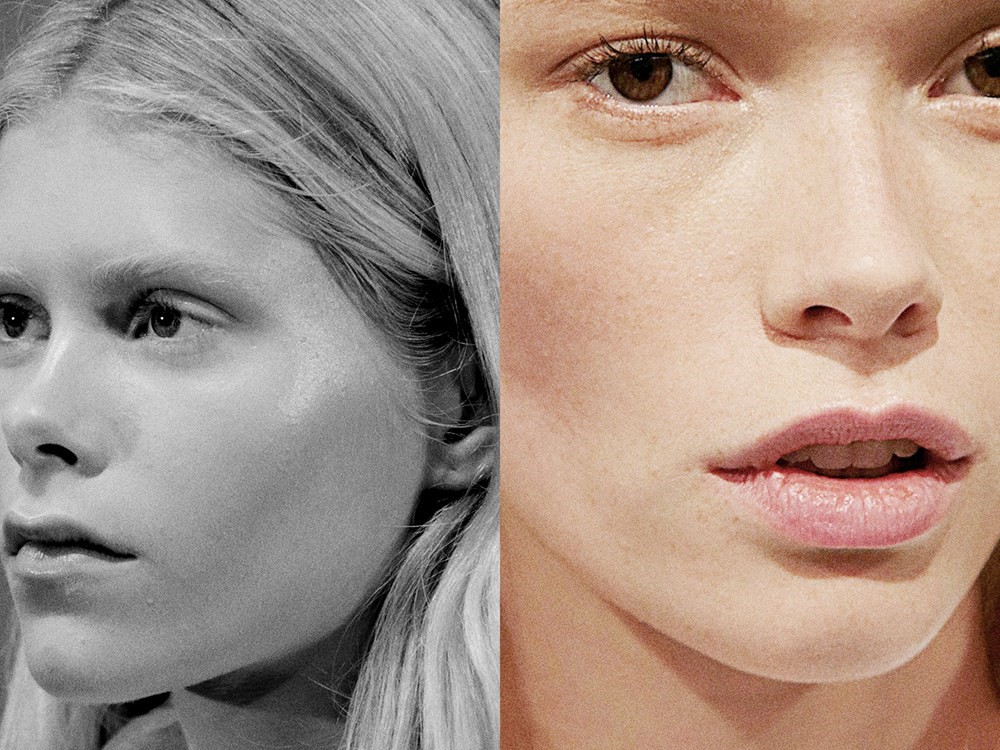
Glamped up, Sexed Up
You can’t ignore Gucci’s iconic sultry past under Tom Ford and its more straightforward iteration of sexiness under Frida Giannini but under Michele, articulation on sensuality is more layered – and for the most part, more modest. 70s glam rock and psychedelia lingered all over the collection to bring his take on sexiness to the fore. The soles of the Terry de Havilland-style platform shoes were kissed by a suggestive teeth-baring lip graphic, that might have graced 60s counterculture art. There’s also a Carry On quality to some of the clothes, as black sequin outlines created trompe l’oeil takes on peignoirs and lingerie, and sheer tulle dresses in candy colours revealed the body without looking overt. Stars embroidered over a sweater to form nipple pasties are yet another nudge nudge wink wink gesture from Michele. These glamped up lurexes, metallic leathers and glittering surfaces hinted at what lies beneath, without being provocatively explicit.


How the Garden of Gucci Grows
It was tipping it down with torrential rain when we arrived at the abandoned train station – a dramatic switch up from Gucci’s usual boxed-in venue – but that didn’t stop us from noticing the lush and verdant greenery, sprouting up wildly on both sides of the runway. There’s another handy metaphor for Michele’s Gucci. This garden of his, once flourishing, has now been replanted with new seeds, but the soil is still the same. The collection’s incorporation of Gucci insignia continues to grow in strength. The traditional flowers of Gucci’s Flora scarf print created in the 60s blossoms all over the collection. The navy and red grosgrain stripe from Gucci’s signature luggage streaks its way across this season’s bags and onto the opening green lace dress. The double GG handbags sprouted beaded pop art iconography. A masterful GG leather and suede trench printed with painterly Fragonard flowers is perhaps the most representative of what Michele is doing with Gucci’s well-established house signatures. And in the process, the designer is also growing a visual language of his own as serpents, first introduced in the Cruise 2016 collection, snaked their way onto the backs of jackets and slithered down the runway carpet.
There’s also a distinct nod to the post-war elegante era of Italian moda – a smart, total look comprising of a coat, gloves, shoes, bag, a hat and jewellery. Michele wholeheartedly embraces Gucci’s illustrious past as well as its status as a fashion powerhouse of Italy – two things which could overawe a designer. Somehow though, we find ourselves in a very intimate garden, with that serpent drawing us in deeper, as we’re tempted by the sweetness of Gucci’s sartorial fruits.
